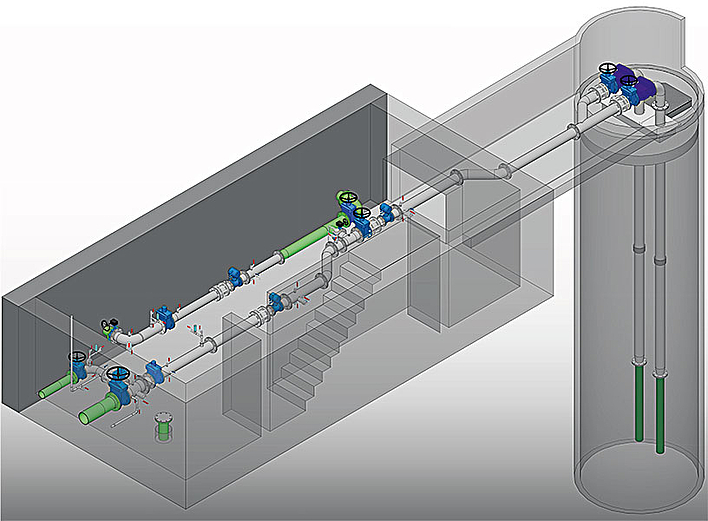Pumps as the driving force
In natural systems, water flows by gravity to lower elevations or seeps into the ground to form groundwater. This physical property is harnessed in drinking water supply: elevated reservoirs (water towers) use gravity to generate the necessary pressure in the distribution network.
As the reservoirs are emptied through consumption, they must be refilled regularly – usually by pumps that draw water directly from groundwater wells or deliver treated water from waterworks.
Pumps consume a significant amount of energy: globally, pump systems account for around 10% of electricity consumption – in the water supply sector, this figure can be as high as 90%. Careful planning and efficient design are therefore essential.
In addition to optimal hydraulic design, another key approach to increasing efficiency is electronic control. The use of frequency converters and/or intelligent control systems can often greatly improve operation and significantly reduce or even minimise energy consumption.



